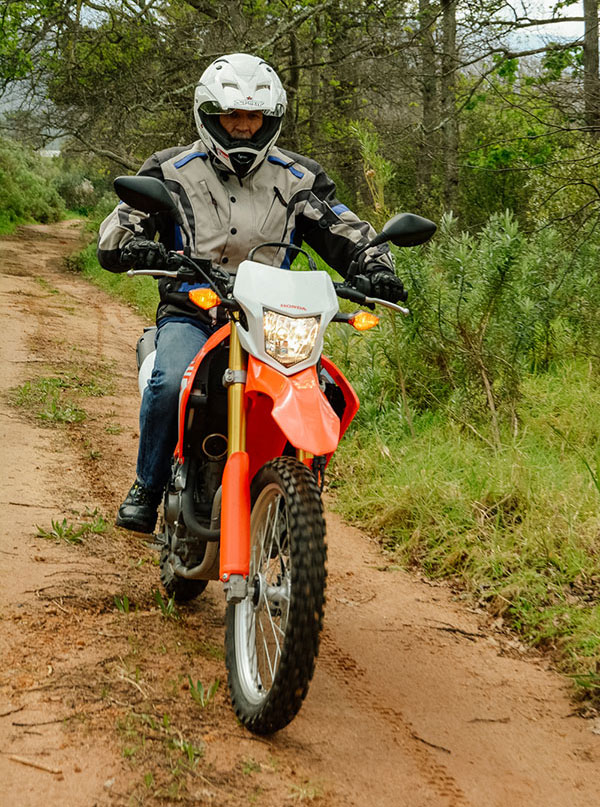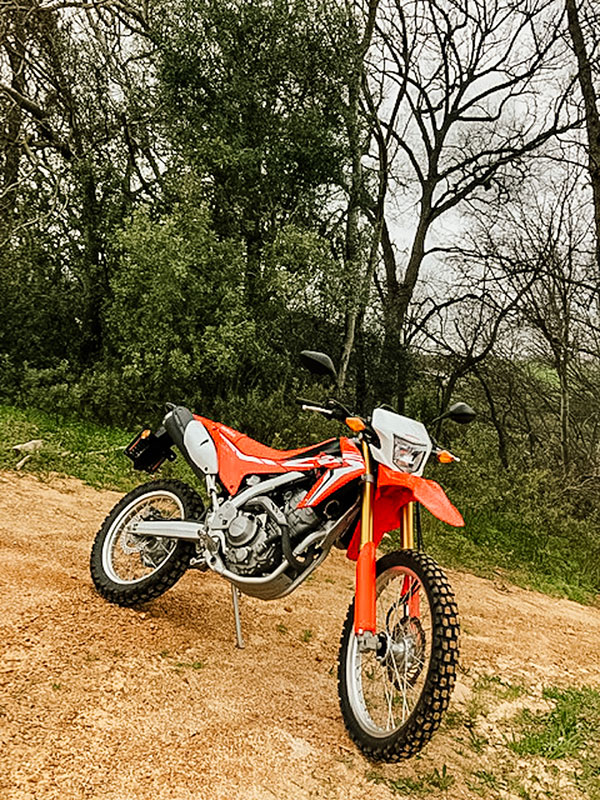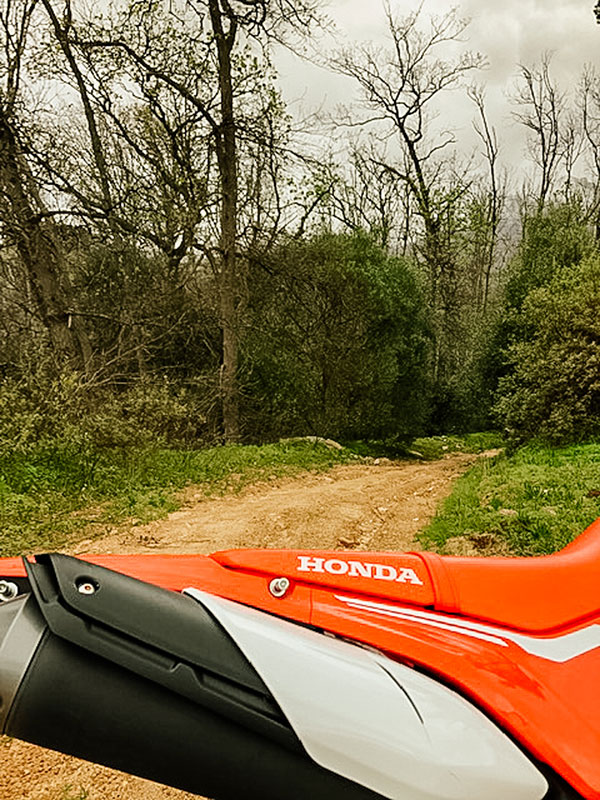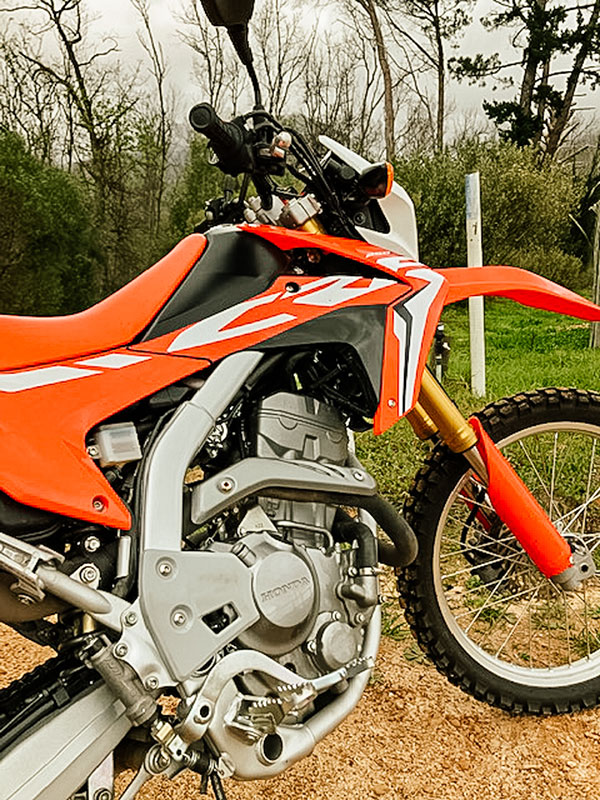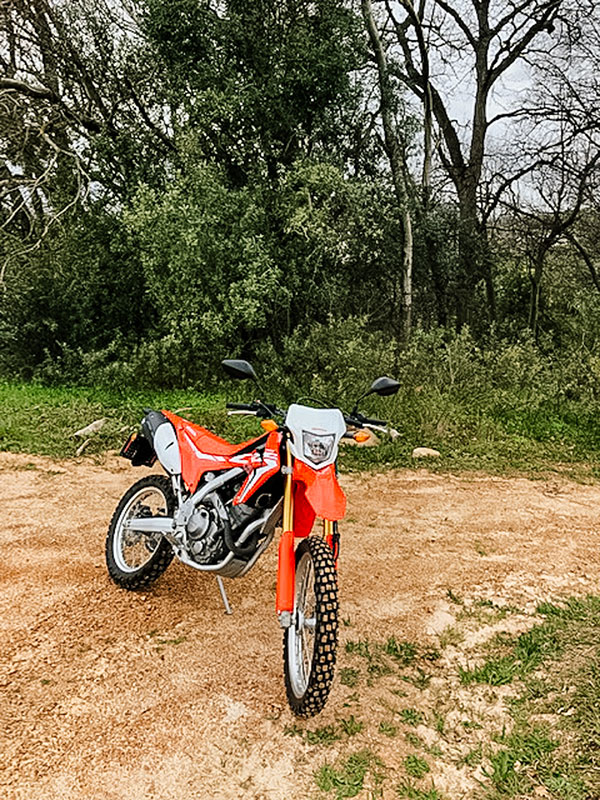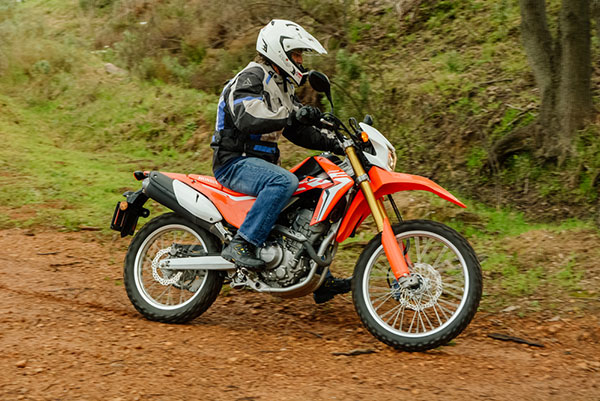
03 Sep On yer bike: Honda CRF 250 L
FMM Curator Wayne Harley’s passion for motorcycles is reflected in this month’s contribution about a smile-inducing Honda…
In 1972, Honda introduced the world to a small-capacity 4-stroke motorcycle in the form of the XL 250 and catapulted the machine into cult status with many top collectors paying big money to have a pristine example amongst their assets. When it comes to engines, Honda has always preferred pursuing 4-stroke options, and for the XL 250 the company chose a basic overhead-cam single-cylinder air-cooled gem producing 17 kW at a healthy 8 000 r/min with remarkable reliability. This was a winning formula, and Honda would keep the XL 250 as part of its line-up for many years, finally changing to the XR model line-up in the late-’80s and, just recently, the CRF made its appearance.
However, Honda has always aimed its 250 at the entry-level dual-sport market and, after all these years, has practically perfected this concept, yet very few people know just how versatile these small capacity bikes are. Not only are they great city commuters with reasonable fuel consumption and astounding reliability as off-roaders, they often match rival bigger bikes in the market with ease.
Moving on to 2008 and the introduction of the street-legal CRF 250L that, along with its siblings, started replacing the XR stalwarts; gone were the legendary look of the Honda’s enduro tank, chiseled-square shapes and rock-solid air-cooled motors. The new CRF took its design from the sleek and light motocross bike, but with the addition of the necessary road-going appendages. However, if you take a proper look you will see just what has been done to make it a true dual-sport machine that can live up to the long reputation of the XL and XR 250. The most noticeable was in the engine department. Honda sourced the liquid-cooled, twin overhead-cam, quad-valve engine from the CFR 250R road bike. It was a little heavier than a competition motor but perfect for the job and, again, super reliable, not over stressed – and with long periods between services.
In 2017, Honda improved the engine’s performance by increasing the size on the throttle bodies and redesigning the exhaust. This gave the bike 18,5 kW and 22,6 N.m of torque, and the little 250 would happily rev to 8 500 all day long, helping to get the bike up to – and maintain – safe highway speeds (at sea level). The CRF makes use of a six-speed manual gearbox, which is super smooth to operate, and is precise. However, having just been given the opportunity to sample the latest machine, I found the gearing more suited for the open-road rider than the off-roader as once too often I found myself one cog too high and not having enough torque to pull me up a trail, forcing me to either open the throttle wide or rapidly down-shift to get the most from the engine.
One identifying feature is that even though it looks a lot like a motocross bike, it is slightly lower, so you are not up on your toes all the time. The seat is claimed to be 875 mm from the ground and was a perfect fit for me, but I did wonder if the lowering of the bike, plus the softer suspension, would affect its ground clearance, which is claimed to be 255 mm. On the topic of suspension, Honda has fitted Showa upside-down front shocks and a Showa Pro-link mono shock at the rear. It all looks really good and gets the job done well enough, but unfortunately is only rear pre-load adjustable. I found it a little too soft for my liking, but didn’t get too carried away with any serious off roading such as jumping or really rough trail riding. However, the handling is good and you never feel nervous, even at speed on dirt roads. The brakes are perfect for a bike of this size and get the job done well. Honda has fitted Nissin hydraulic single-wave discs on both wheels, with optional ABS.
The seat is maybe the only thing I found disappointing, which may well be simply a personal take on the matter. But as a dual-sport bike one does expect the rider to be seated more than standing, so why fit a seat that has the same shape and dimensions as one fitted to a motocross bike? I found the seat offered very little comfort and was too narrow, which is great if standing in the pegs or traversing a tight trail and you need to manoeuvre your machine over obstacles, but it does become rather uncomfortable for a 45-minute ride to work etc. But, in general, the CRF can hold its own against most of the competitor brands in the current market.
When I was offered this motorcycle to test I wasn’t all that keen, as it didn’t really fit into what I started out doing earlier this year with my modern ‘retro classic’ road tests. But after a few days with the bike it brought back old memories of a good friend and I, at about sixteen years of age, ripping up the world on his Honda CR 125 Red Rocket in my home town of Witbank. So, in a nutshell: the Honda CRF 250L is an affordable, well-built, reliable go-anywhere motorcycle with good dealer back-up and, yes, it did bring a smile to my face…
